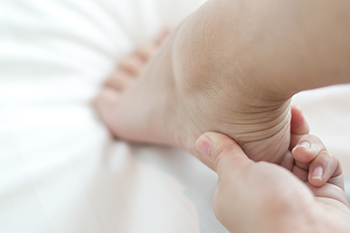Baytown, TX (281) 837-8371
Managing Sever’s Disease
Tuesday, 05 November 2024 00:00
Sever's disease, also known as calcaneal apophysitis, is a common condition affecting active children and adolescents, particularly those aged eight to 14. It occurs when the growth plate at the back of the heel becomes inflamed, often due to repetitive stress from running or jumping. Symptoms typically include heel pain, tenderness, and discomfort during physical activities, which can sometimes lead to limping. Treatment for Sever's disease focuses on alleviating pain and inflammation. Wearing supportive footwear and using orthotics can help reduce strain on the heel. A podiatrist can diagnose and manage Sever's disease, providing tailored advice on proper footwear, stretching exercises, and activity modifications. If your child is experiencing heel pain, it is important to seek professional help. It is suggested that you schedule an appointment with a podiatrist to ensure effective treatment and support for your child's active lifestyle.
Sever's disease often occurs in children and teens. If your child is experiencing foot or ankle pain, see Abeer M. Foteh, DPM from Greater Houston Foot Centers. Our doctor can treat your child’s foot and ankle needs.
Sever’s Disease
Sever’s disease is also known as calcaneal apophysitis, which is a medical condition that causes heel pain I none or both feet. The disease is known to affect children between the ages of 8 and 14.
Sever’s disease occurs when part of the child’s heel known as the growth plate (calcaneal epiphysis) is attached to the Achilles tendon. This area can suffer injury when the muscles and tendons of the growing foot do not keep pace with bone growth. Therefore, the constant pain which one experiences at the back of the heel will make the child unable to put any weight on the heel. The child is then forced to walk on their toes.
Symptoms
Acute pain – Pain associated with Sever’s disease is usually felt in the heel when the child engages in physical activity such as walking, jumping and or running.
Highly active – Children who are very active are among the most susceptible in experiencing Sever’s disease, because of the stress and tension placed on their feet.
If you have any questions, please feel free to contact our office located in Baytown, TX . We offer the newest diagnostic and treatment technologies for all your foot and ankle injuries.







